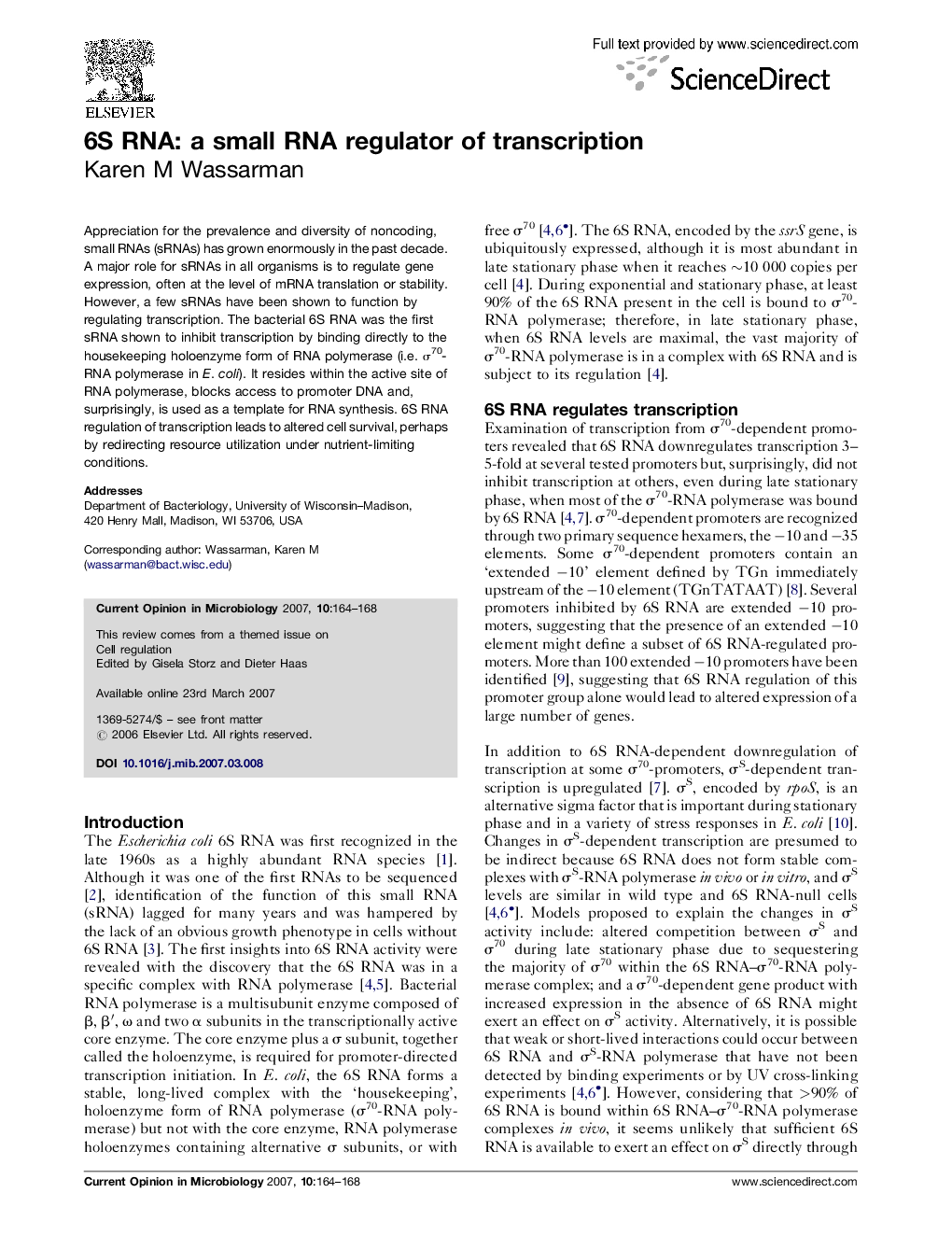| Article ID | Journal | Published Year | Pages | File Type |
|---|---|---|---|---|
| 3399482 | Current Opinion in Microbiology | 2007 | 5 Pages |
Appreciation for the prevalence and diversity of noncoding, small RNAs (sRNAs) has grown enormously in the past decade. A major role for sRNAs in all organisms is to regulate gene expression, often at the level of mRNA translation or stability. However, a few sRNAs have been shown to function by regulating transcription. The bacterial 6S RNA was the first sRNA shown to inhibit transcription by binding directly to the housekeeping holoenzyme form of RNA polymerase (i.e. σ70-RNA polymerase in E. coli). It resides within the active site of RNA polymerase, blocks access to promoter DNA and, surprisingly, is used as a template for RNA synthesis. 6S RNA regulation of transcription leads to altered cell survival, perhaps by redirecting resource utilization under nutrient-limiting conditions.
